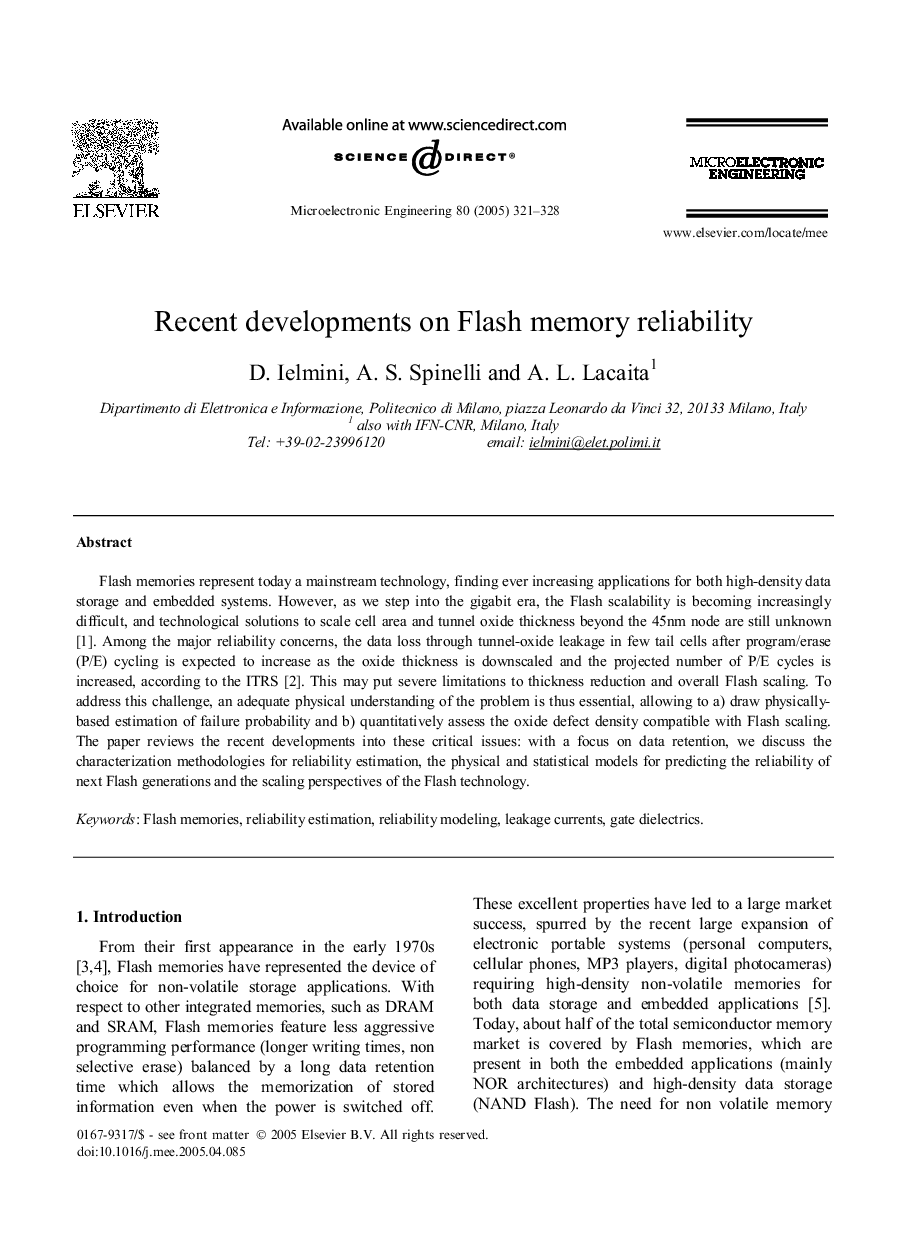| Article ID | Journal | Published Year | Pages | File Type |
|---|---|---|---|---|
| 9670517 | Microelectronic Engineering | 2005 | 8 Pages |
Abstract
Flash memories represent today a mainstream technology, finding ever increasing applications for both high-density data storage and embedded systems. However, as we step into the gigabit era, the Flash scalability is becoming increasingly difficult, and technological solutions to scale cell area and tunnel oxide thickness beyond the 45nm node are still unknown [1]. Among the major reliability concerns, the data loss through tunnel-oxide leakage in few tail cells after program/erase (P/E) cycling is expected to increase as the oxide thickness is downscaled and the projected number of P/E cycles is increased, according to the ITRS [2]. This may put severe limitations to thickness reduction and overall Flash scaling. To address this challenge, an adequate physical understanding of the problem is thus essential, allowing to a) draw physically-based estimation of failure probability and b) quantitatively assess the oxide defect density compatible with Flash scaling. The paper reviews the recent developments into these critical issues: with a focus on data retention, we discuss the characterization methodologies for reliability estimation, the physical and statistical models for predicting the reliability of next Flash generations and the scaling perspectives of the Flash technology.
Related Topics
Physical Sciences and Engineering
Computer Science
Hardware and Architecture
Authors
D. Ielmini, A.S. Spinelli, A.L. Lacaita,
